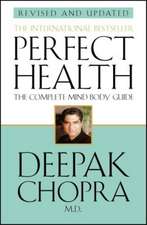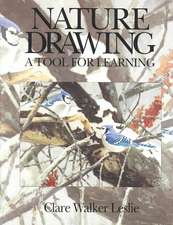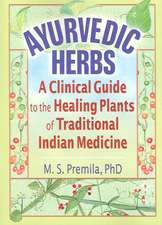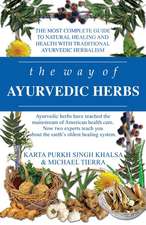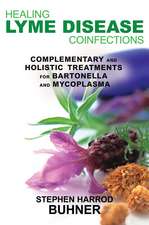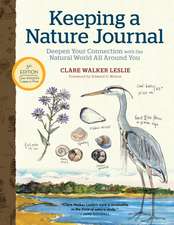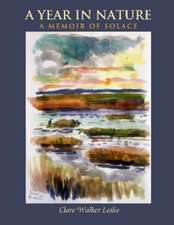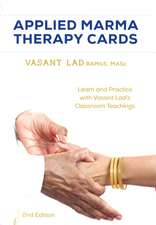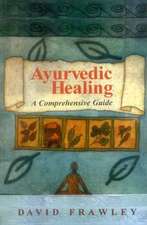The Ancient Celtic Festivals: and How We Celebrate Them Today
Autor Clare Walker Leslie, Frank E. Geraceen Limba Engleză Paperback – 24 apr 2008 – vârsta până la 12 ani
Preț: 82.89 lei
Nou
Puncte Express: 124
Preț estimativ în valută:
15.86€ • 16.56$ • 13.13£
15.86€ • 16.56$ • 13.13£
Carte disponibilă
Livrare economică 14-28 martie
Preluare comenzi: 021 569.72.76
Specificații
ISBN-13: 9781594772566
ISBN-10: 1594772568
Pagini: 64
Ilustrații: Full-color illustrations throughout
Dimensiuni: 279 x 216 x 5 mm
Greutate: 0.26 kg
Ediția:2nd Edition, Now in Paperback
Editura: Inner Traditions/Bear & Company
Colecția Inner Traditions
ISBN-10: 1594772568
Pagini: 64
Ilustrații: Full-color illustrations throughout
Dimensiuni: 279 x 216 x 5 mm
Greutate: 0.26 kg
Ediția:2nd Edition, Now in Paperback
Editura: Inner Traditions/Bear & Company
Colecția Inner Traditions
Notă biografică
Clare Walker Leslie is a nationally known naturalist, wildlife artist and educator. She is the author of the popular children's book Nature All Year Long, as well as six books for adults on observing nature and nature drawing. She divides her time between Cambridge, Massachusetts and Granville, Vermont. Frank E. Gerace has studied the Celts in myth and legend for twenty years. He lives in Allston, Massachusetts.
Extras
PART III
Modern Ways to Celebrate the Ancient Festivals
The festivals just described came out of traditions begun long, long ago--as much as 2,700 years ago! As peoples moved to different lands and took on differing religions and customs, these festivals changed and evolved. But they are still celebrated at the same times of the year.
• Samhain became the Christian celebration of All Saints’ and All Souls’ Days. All Saints’ Day was also known as All Hallows’ Day (hallow is Old English for saint, a hallowed person). These celebrations evolved into a three-day festival with All Hallows’ Eve (Halloween) celebrated on October 31, All Saints’ Day celebrated on November 1, and All Souls’ Day on November 2.
• Imbolc became the Christian Candlemas and the folk legend of Groundhog Day, set on February 2.
• Beltane became a general spring festival, May Day, and Lady Day, in honor of the Virgin Mary, set on May 1.
• Lughnasa became a countryside celebration of the harvest, set with Saint John’s Day on August 1.
In colonial America, the Puritans banned these festivals because of their non-Christian origins. With the large Irish immigrations in the 1840s, the Old World Celtic traditions began to seep back into the culture of those living in the New World. Today, with the increased commercialization of these celebrations, it can be difficult to determine exactly what has been done traditionally and what is part of our modern culture. We will talk about the modern celebrations in the same order that we talked about Samhain, Beltane, Imbolc, and Lughnasa to remind ourselves of their Celtic origins and of what was important to the Celts, the division of the year into dark and light, winter and summer (see page 15).
Halloween (Samhain--October 31)
All Hallows’ Eve, or Halloween, comes from the early Christian adaptation of the most important festival of the Celtic Year, Samhain. Sometime after a.d. 400, All Hallows’ Eve was spent in church praying for the souls of the dead. November 1 and November 2 were spent visiting the graves of the dead. In Spanish-speaking cultures in North, Central, and South America, El Dia de los Muertos (The Day of the Dead) is celebrated on November 2, with whole families spending the night in cemeteries to honor the souls of their ancestors. In Italy, the Roman festival of Pomona, the goddess of fruits, was celebrated around November 1, with similar overlaps in customs to the celebration of Samhain by their neighbors to the north.
In the ninth century a.d., Pope Gregory IV placed All Saints’ Day and All Hallows’ Eve in the church calendar. Increasingly, throughout medieval Europe and here in the colonies of early America, all celebrations on October 31 that were not church related were condemned. But in rural areas in Ireland, Scotland, Wales, and parts of England, folk customs continued well into the twentieth century. It is some of these folk traditions that we describe on the following page. Our customs of trick-or-treating and Mischief Night pranks come from folk culture.
Witches did not exist in the early Celtic cultures. The word witch comes from an old Anglo-Saxon word, “Wicca,” meaning wizard. In early cultures wizards, sorcerers, druids, shamans, and witches were wise advisors of a community who understood the rhythms and mysteries of life in the world of nature. Witches were associated with Halloween by the Medieval Church as they celebrated the Celtic Year’s End festival of Samhain. Witches could be young, old, pretty, ugly. Often they helped the sick and delivered babies.
Bonfires were lit on hilltops to ward off evil spirits out stealing milk, destroying the crops, and harming livestock. Pranksters and mischief makers roamed countrysides dressed in costumes playing tricks on neighbors. Blame was placed on “spirits” abroad.
Trickster--the countryside prankster. Similar costumes are still worn at Mardi Gras in America and at Carneval in Europe.
Costumes worn to scare away evil spirits.
Trick or treat evolved from an Irish custom of groups of peasants going from house to house asking for money and food in the name of Muck Olla, an Irish god, and later, in the name of Saint Columba, a sixth-century priest.
Candles put in rutabagas to scare away spirits--today we use pumpkins.
Halloween--Samhain Activities
• Locate sunrise and sunset times for your area. Compare with Beltane times.
• Light an orange candle. Blow it out. Think of all the fires extinguished and relit over the ages to honor the year’s end. Relight one hour later as a sign that the New Year has begun.
• Cut apples in cross section to float in hot cider, a drink common in Medieval Europe. Find the five-pointed star, an ancient symbol of the Goddess and protection.
• Gather a table display of fall’s end signs: colored leaves, fruits, nuts, and the last flowers.
• Leave a saucer of milk out for the faerie folk or spirits abroad--to please them.
Cuprins
Introduction
1. Who Were the Celts?
2. The Ancient Celtic Festivals
3. Modern Ways to Celebrate the Ancient Festivals
4. How Natural Science Explains Ancient Traditions
5. Where Do Traditions and Calendars Come From?
Glossary
Bibliography
Index
1. Who Were the Celts?
2. The Ancient Celtic Festivals
3. Modern Ways to Celebrate the Ancient Festivals
4. How Natural Science Explains Ancient Traditions
5. Where Do Traditions and Calendars Come From?
Glossary
Bibliography
Index
Recenzii
"An enormously engaging and informative book. The Authors have included aspects of science, history, mythology, and literature in their explanation of Celtic festivals. . . . will provide the answers for all the children and adults who ever wondered about the mysterious rituals of some of our most well-known holidays. A valuable resource for homes, schools, and libraries."
"This is a charming and delightful book for adults and children alike. In a simple manner, the authors trace many of our festivals to their Celtic and European roots."
"Frank Gerace and Clare Walker Leslie have put together a wonderful and much needed introduction to the magical year. I warmly recommend it to all in need of a good, accurate, and clearly presented guide."
"One of the best books that a Celtic parent could give to their child."
". . . teaches kids without dumbing down the history."
"A good book for families and teachers."
"Highly recommended. This is a good book for kids. I'd recommend it for parents and educators alike."
"This is an excellent selection for Pagan parents looking for material to help them introduce the Wheel of the Year to their children."
"This is lavishly illustrated with color drawings. It explains the natural science and astronomy behind the seasons. The author also explains how we got calendars. [The Ancient Celtic Festivals] presents engrossing history of the Celts, their practices, and traditions."
"This is a charming and delightful book for adults and children alike. In a simple manner, the authors trace many of our festivals to their Celtic and European roots."
"Frank Gerace and Clare Walker Leslie have put together a wonderful and much needed introduction to the magical year. I warmly recommend it to all in need of a good, accurate, and clearly presented guide."
"One of the best books that a Celtic parent could give to their child."
". . . teaches kids without dumbing down the history."
"A good book for families and teachers."
"Highly recommended. This is a good book for kids. I'd recommend it for parents and educators alike."
"This is an excellent selection for Pagan parents looking for material to help them introduce the Wheel of the Year to their children."
"This is lavishly illustrated with color drawings. It explains the natural science and astronomy behind the seasons. The author also explains how we got calendars. [The Ancient Celtic Festivals] presents engrossing history of the Celts, their practices, and traditions."
Descriere
Travel 2,500 years back in time to find out where many of our modern holiday traditions originated.

